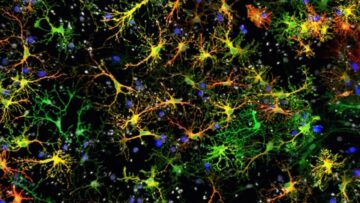Shelly Fan in Singularity Hub:
 Alzheimer’s disease slowly takes over the mind. Long before symptoms occur, brain cells are gradually losing their function. Eventually they wither away, eroding brain networks that store memories. With time, this robs people of their recollections, reasoning, and identity. It’s not the type of forgetfulness that happens during normal aging. In the twilight years, our ability to soak up new learning and rapidly recall memories also nosedives. While the symptoms seem similar, normally aging brains don’t exhibit the classic signs of Alzheimer’s—toxic protein buildups inside and surrounding neurons, eventually contributing to their deaths. These differences can only be caught by autopsies, when it’s already too late to intervene. But they can still offer insights. Studies have built a profile of Alzheimer’s brains: Shrunken in size, with toxic protein clumps spread across regions involved in reasoning, learning, and memory.
Alzheimer’s disease slowly takes over the mind. Long before symptoms occur, brain cells are gradually losing their function. Eventually they wither away, eroding brain networks that store memories. With time, this robs people of their recollections, reasoning, and identity. It’s not the type of forgetfulness that happens during normal aging. In the twilight years, our ability to soak up new learning and rapidly recall memories also nosedives. While the symptoms seem similar, normally aging brains don’t exhibit the classic signs of Alzheimer’s—toxic protein buildups inside and surrounding neurons, eventually contributing to their deaths. These differences can only be caught by autopsies, when it’s already too late to intervene. But they can still offer insights. Studies have built a profile of Alzheimer’s brains: Shrunken in size, with toxic protein clumps spread across regions involved in reasoning, learning, and memory.
However, those results only capture the very end of the journey.
This week, an international team led by Columbia University, MIT, and Harvard sought to map the entire process. Analyzing 437 donated brains from aging people—some with Alzheimer’s, others not—they peeked into the gene expression of 1.65 million brain cells in the regions most affected by Alzheimer’s and built a comprehensive cell atlas for aging brains.
More here.
Enjoying the content on 3QD? Help keep us going by donating now.
